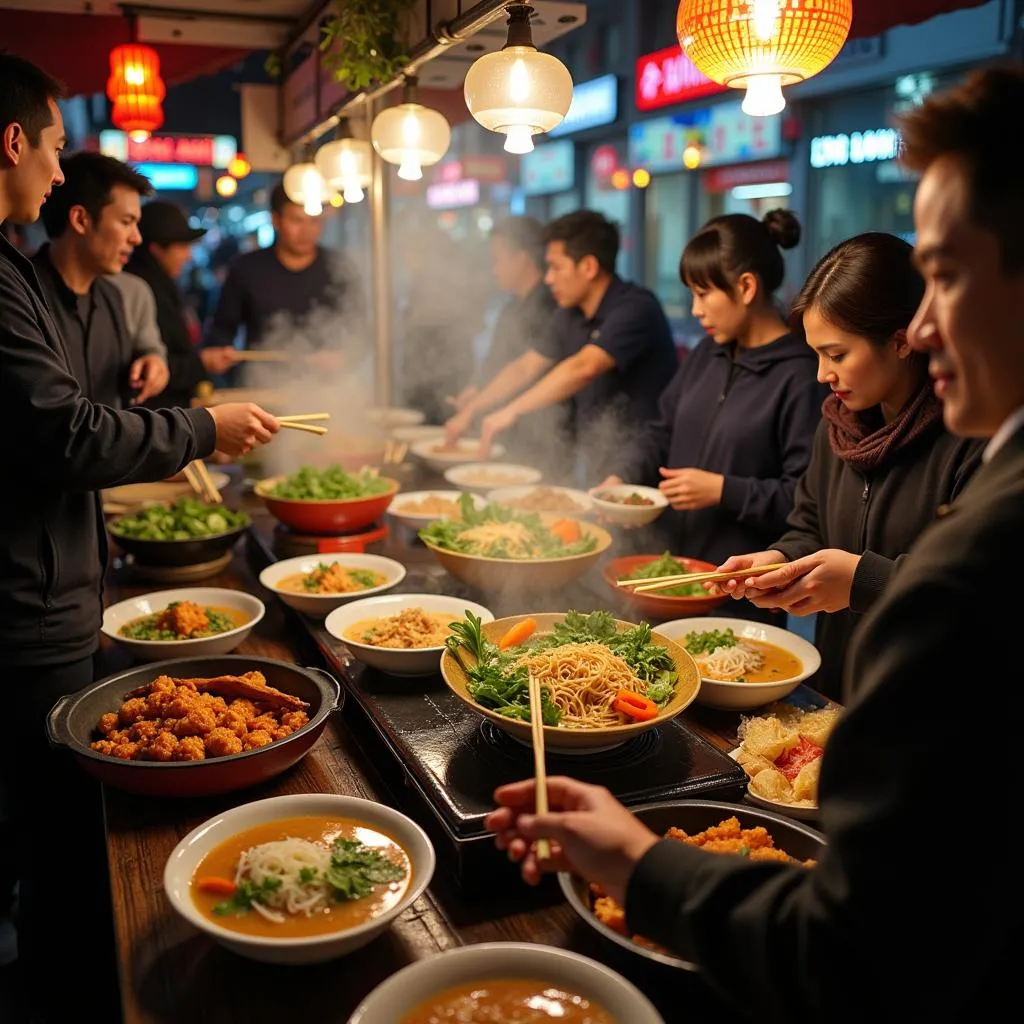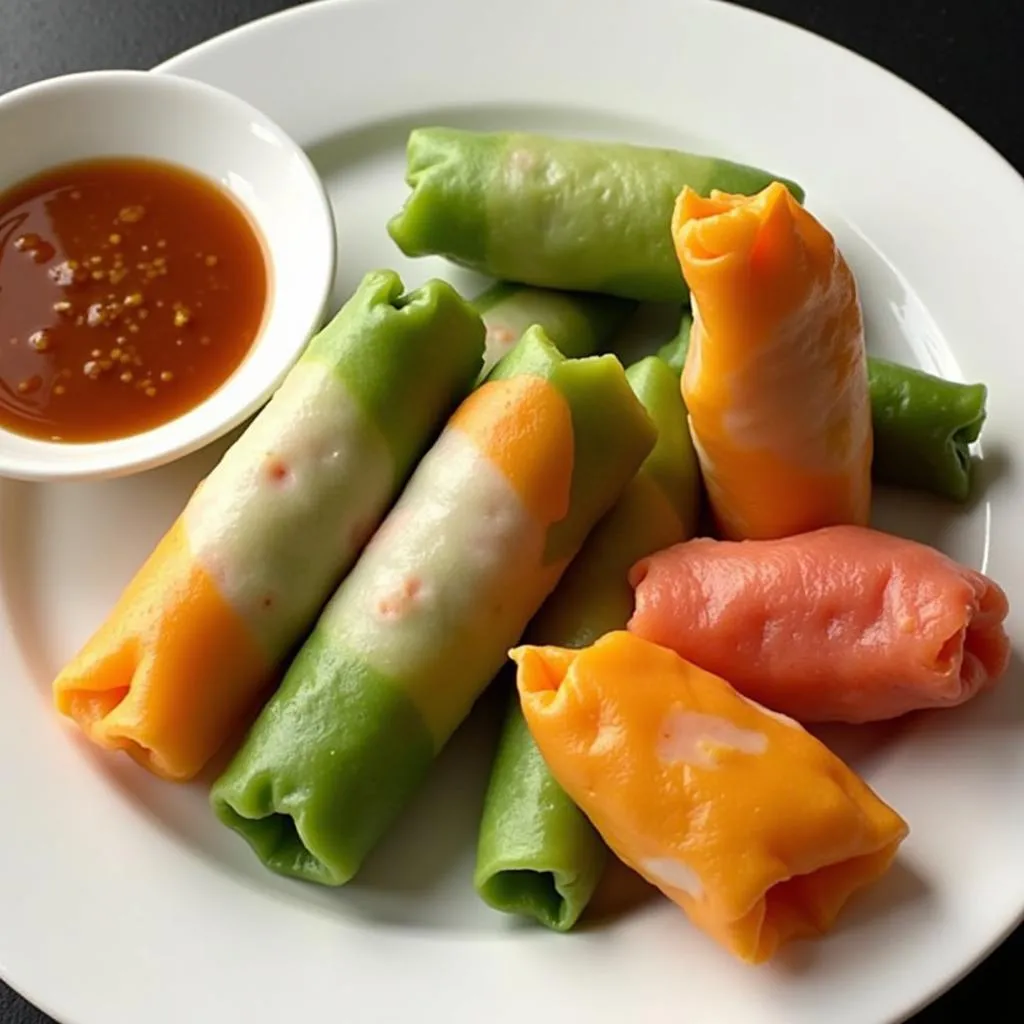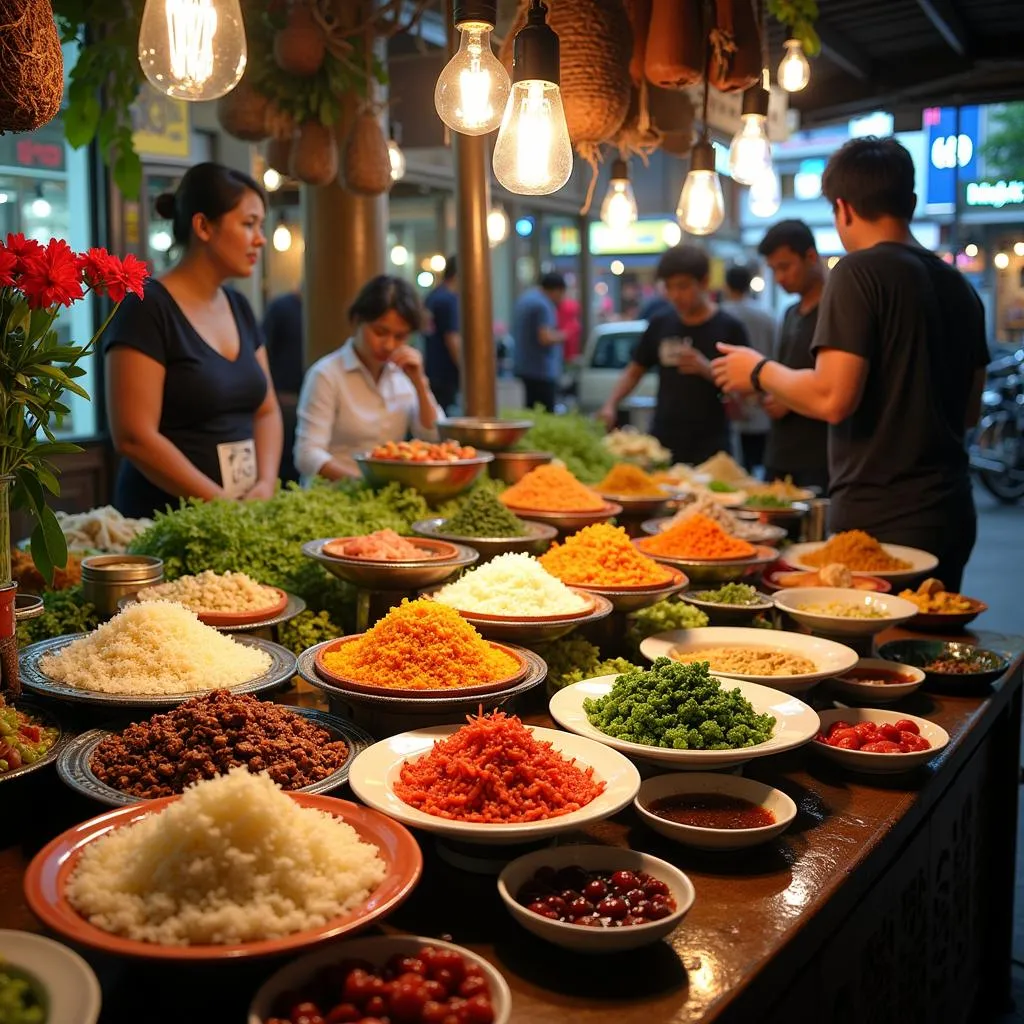Picture this: You’re planning your dream trip to Hanoi, Vietnam. The bustling streets, the aromatic street food, the ancient temples – it’s all so exciting! But then, your ulcerative colitis (UC) flares up. Suddenly, the thought of navigating unfamiliar cuisines feels daunting. “What can I eat? What should I avoid?” These questions become top of mind.
Don’t worry, fellow traveler! Managing UC while exploring a new city like Hanoi is completely possible. With a little planning and the right dietary choices, you can still enjoy the vibrant food scene without triggering your symptoms. This guide will help you navigate the do’s and don’ts of eating with UC in Hanoi, ensuring a safe and delicious journey.
Understanding Ulcerative Colitis and Its Impact on Your Diet
Ulcerative colitis is a chronic inflammatory bowel disease (IBD) that affects the lining of the colon. When UC is active, the colon becomes inflamed and develops ulcers, leading to symptoms like abdominal pain, diarrhea, rectal bleeding, and fatigue.
While there’s no one-size-fits-all diet for UC, certain foods can trigger or worsen symptoms, while others can help manage inflammation and promote gut health.
Here’s the good news: Vietnamese cuisine, with its emphasis on fresh ingredients, light cooking methods, and abundance of vegetables, can be quite UC-friendly!
Foods to Enjoy in Hanoi with Ulcerative Colitis
1. Embrace the Power of Pho:
Pho, the soul of Vietnamese cuisine, is a comforting and nourishing dish that’s generally well-tolerated by people with UC. The clear broth is easy on the digestive system, while the rice noodles provide a source of easily digestible carbohydrates. Opt for chicken or tofu pho for a lean protein option.
 Hanoi Pho Street Food
Hanoi Pho Street Food
2. Go Green with Bun Cha:
Bun Cha, another Hanoi specialty, features grilled pork patties served with rice vermicelli noodles, fresh herbs, and a dipping sauce. The grilled pork provides protein, while the abundance of herbs and vegetables adds fiber and antioxidants. You can ask for your Bun Cha without the dipping sauce, or use it sparingly, as it can be high in sodium and potentially irritating.
3. Savor the Goodness of Goi Cuon:
These fresh spring rolls, filled with vermicelli noodles, vegetables, and often shrimp or tofu, are a light and refreshing option. They’re packed with nutrients and fiber, and the rice paper wrappers are easy to digest.
4. Indulge in Banh Xeo:
This crispy crepe, made from rice flour and turmeric, is filled with a variety of ingredients, including shrimp, pork, bean sprouts, and mung beans. While delicious, the crepe can be oily, so it’s best to consume it in moderation.
5. Quench Your Thirst with Nuoc Ep:
Stay hydrated with fresh fruit juices like “Nước ép dứa” (pineapple juice), “Nước ép ổi” (guava juice), or “Nước ép cam” (orange juice). These juices are rich in vitamins and minerals and can help replenish electrolytes lost due to diarrhea.
Foods to Approach with Caution in Hanoi
While many Vietnamese dishes can be enjoyed with UC, some ingredients or cooking methods might trigger your symptoms. Here’s what to watch out for:
1. Spicy Surprises:
Vietnamese cuisine often uses chili peppers, which can irritate the digestive system. Be sure to ask for “không cay” (no spicy) or “ít cay” (a little spicy) to adjust the heat level to your tolerance.
2. Oily Adventures:
Deep-fried dishes like spring rolls (Cha Gio) or fried wontons (Bánh Tom) can be high in fat and difficult to digest. Opt for steamed or grilled options instead.
3. Hidden High-FODMAP Foods:
Some Vietnamese dishes contain ingredients high in FODMAPs, short-chain carbohydrates that can trigger symptoms in people with IBD. Common culprits include onions, garlic, cabbage, and certain fruits like watermelon and mango. It’s best to limit or avoid these ingredients, especially during a flare-up.
4. Dairy Delights (or Dilemmas):
While not as prevalent in traditional Vietnamese cuisine, dairy products like milk and cheese are becoming increasingly common. If you’re lactose intolerant, be sure to ask if dishes contain milk or cheese.
 Fresh Spring Rolls in Hanoi
Fresh Spring Rolls in Hanoi
Navigating Hanoi’s Food Scene with UC: Tips and Tricks
- Communicate Clearly: Don’t be afraid to communicate your dietary restrictions to restaurant staff. Learning a few key Vietnamese phrases like “Tôi bị viêm đại tràng” (I have ulcerative colitis) and “Không cay” (no spicy) can be helpful.
- Start Slowly: When trying new foods, start with small portions to see how your body reacts.
- Eat Mindfully: Pay attention to how your body feels after eating certain foods. Keep a food journal to track your symptoms and identify potential triggers.
- Pack Snacks: Carry UC-friendly snacks like rice crackers, bananas, or cooked rice with you to avoid getting caught hungry and making impulsive food choices.
- Stay Hydrated: Diarrhea is a common symptom of UC, so it’s crucial to stay hydrated. Drink plenty of water, herbal tea, or electrolyte-rich beverages.
Explore Hanoi with TRAVELCAR: Your Transportation Solution
While navigating your diet is important, getting around Hanoi comfortably is equally crucial. TRAVELCAR offers reliable and convenient transportation solutions to enhance your Hanoi experience:
- Airport Transfers: Arrive and depart stress-free with our hassle-free airport pick-up and drop-off services.
- City Tours: Explore Hanoi’s iconic landmarks and hidden gems at your own pace with our customizable city tours.
- Day Trips: Discover the breathtaking beauty of surrounding areas like Ha Long Bay and Ninh Binh with our comfortable and spacious vehicles.
We offer a wide range of vehicles to suit your needs, including 16-seater, 29-seater, and 45-seater buses.
Ulcerative Colitis in Hanoi: A Personal Perspective
As Dr. Nguyen Thi Lan, a renowned gastroenterologist in Hanoi, often tells her patients, “Living with UC requires a mindful approach to your diet and lifestyle. But it shouldn’t stop you from enjoying life’s pleasures, especially in a city as vibrant as Hanoi.”
 Hanoi Street Food Market
Hanoi Street Food Market
Her advice resonates with Mai, a young Hanoian who was diagnosed with UC a few years ago. “At first, I was worried about how my diet would impact my social life and travel plans,” she shares. “But with time, I learned to adapt and listen to my body. Now, I can still enjoy my favorite Hanoi dishes, albeit with a few modifications. And Hanoi’s diverse food scene offers so many delicious and healthy options!”
Your Hanoi Adventure Awaits!
Managing UC shouldn’t hold you back from exploring the wonders of Hanoi. With a little planning and this guide in hand, you can savor the flavors of this vibrant city while keeping your gut happy. Remember to listen to your body, communicate your needs, and most importantly, enjoy your journey!
For all your transportation needs in Hanoi, contact TRAVELCAR at 0372960696, email us at [email protected], or visit our office at 260 Cầu Giấy, Hanoi. We’re here to help you explore Hanoi safely and comfortably.
Have you tried any of these dishes? Share your experiences in the comments below! And for more tips on traveling with UC, check out our blog post on [insert link to a related blog post on your website].